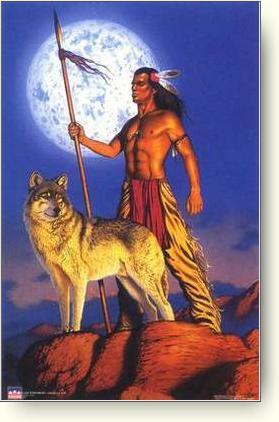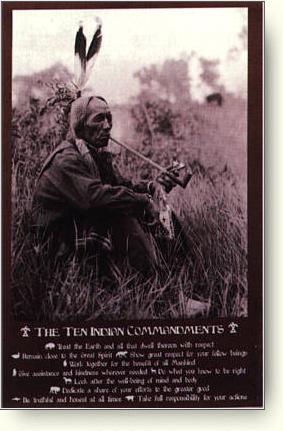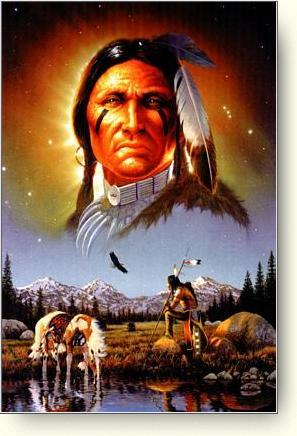
Wild West RPG
Indians
 | |||||
Wild West RPG
Indians
| |||||
 Native Americans, the glory that spans America, our roots and future. Keep in Mind, when creating a Indian character, you do not have to go by stand tribes. You can create your own tribe. When you create your own tribe, you are required to Have stats not only on the tribe, but the character too. As with cowboy movies there are a few Native American films as well. View them when you have time. As with the guild lines of the cowboy, please stay within the era of the 1800's. Weapons of the Indian are basically premitive, not too many with rifles or six shooters. They can aquire the guns off dead cowboy. Or however you choose to aquire one. If you think about the era, or had paid attention in History class, this should be easy. Have fun is the name of the game. | ||||
 If you want information on Tribes please let me know. | ||||
Chief Joseph / Hin-mah-too-yah-lat-kekt (1840-1904) He ultimately became famous as "Chief Joseph," but the man born in the Wallowa Valley in what is now northeastern Oregon was also called Joseph and Joseph the Younger, as his father had been baptized with that Christian name before Chief Joseph was born. However, at the time of his birth in 1840, the Nez Pierce (nay pehr-SAY) called Chief Joseph, Hin-mah-too-yah-lat-kekt, which translates as "thunder coming up over the land from the water" or "thunder coming down the mountain." As a tribe, the Nez Perce had been on good terms with white Europeans after Lewis and Clark opened their lands in Idaho and Washington to exploration. Chief Joseph's father, Old Joseph, signed an 1855 treaty that guaranteed the Nez Perce the rights to their homelands, and, as Old Joseph also converted to Christianity, Chief Joseph attended school in a Christian mission. But after a gold rush that identified Nez Perce lands as prime mining territory, the white government created a second treaty in 1863 that took most of the traditional lands away from the Nez Perce, including their beloved Wallowa Valley. The tribe was left with a tenth of what had originally been promised them, all in Idaho. Old Joseph always insisted his people never agreed to any conditions of this treaty and turned away from cooperation with whites, refusing to acknowledge and sign the treaty, burning his American flag and Bible and refusing to move his people. Upon his father's death, Chief Joseph took his place as chief and his own strong feelings about the validity of the second treaty would shape his life and change the interaction between the Nez Perce and whites forever. He became highly resistant to government attempts to corral his people onto a reservation even as white settlers streamed into the territory. Chief Joseph got a brief reprieve in 1873, when white settlers were actually ordered off Nez Perce lands, but the fighting resumed and after many battles and forced marches many of the Nez Perce were rounded up and sent first to Kansas and then to a reservation in Indian Territory (Oklahoma). Once there, many died of malaria or starvation. Though Chief Joseph would become famous for his surrender speech he was actually a strategist and never considered a "war chief" by his people. His younger brother Olikut generally led the war parties of his band, while Chief Joseph remained behind, responsible for guarding the women and camp. An eloquent speaker, Chief Joseph continued to appeal to government officials in attempts to return his people to their homelands. He never gave up hope that one day the principles of American equality and justice would one day extend to native peoples as well. He did not live to see it. He died in 1904 "of a broken heart." Crazy Horse / Tashunca-uitco Oglala Lakota (Sioux) 1849-1877 While there have been many renowned leaders among the Lakota (Sioux), perhaps the most high-profile of them all is Crazy Horse. A fierce and fearless warrior, and considered a visionary by his people, Crazy Horse also wielded great power and influence in many social and political affairs that faced the Lakota. While his role in battle is often recounted, more important perhaps was his dedication to tradition and the Lakota way of life. As a child, Crazy Horse looked little like the rest of his people. In fact, his hair was so light and wavy he was called "Curly" as a childhood name. Many a white settler who saw him playing along side the trail they traveled thought he was actually a white captive living among the Indians. An enigma then, Crazy Horse remained so. While other Lakota and their leaders sat for portraits, Crazy Horse never allowed a rendering of himself in any medium, especially photographs, saying: "Why would you wish to shorten my life by taking my shadow from me?" While still a very young man, Crazy Horse began his journey toward becoming a legendary warrior. At 13 he stole horses from the Crow and led his first war party before the age of 20. Early on he decided he would fight to protect the Lakota way of life and encroachment of white armies and settlers, fighting against the new arrivals in Wyoming with Red Cloud in the 1865-68 war, playing a key role in destroying William J. Fetterman's brigade at Fort Phil Kearny in 1867. That victory did not stop the influx, however, and the Fort Laramie Treaty of 1868 opened the door of Lakota land to all that Crazy Horse fought to prevent. Undaunted, Crazy Horse led an attack on a surveying party sent into the Black Hills by General George Armstrong Custer in 1873. When the U.S. War Department ordered all Lakota bands onto reservations in 1876, Crazy Horse took it upon himself to lead the resistance. Crazy Horse had taken a Cheyenne woman as his first wife, which allowed a close alliance between the Lakota and Cheyenne. Crazy Horse called upon his Cheyenne relatives to join forces with his Oglala warriors in an attempt to keep General George Crook from following the Rosebud Creek to Sitting Bull's camp on the Little Big Horn River. Crazy Horse and his band of 1,200 warriors turned Crook and his men back on June 17, 1876. This victory paved the way for hope. A week later Crazy Horse joined forces with Sitting Bull and Hunkpapa Lakota leader Gall in an attack that destroyed Custer's Seventh Cavalry. Despite the Indian victory at the Little Bighorn, things changed. Though all three leaders chose not to submit to government orders to report to the reservation, Sitting Bull and Gall decided to lead their people to Canada. Crazy Horse chose to remain in the sacred lands of the Lakota. General Nelson Miles pursued Crazy Horse, the Lakota and their allies relentlessly throughout the winter of 1876-77, bringing Crazy Horse into battle several times. Eventually, the intense focus of the military on his position and intent, coupled with the decline of the buffalo population, led Crazy Horse to surrender on May 6, 1877. Even in defeat, Crazy Horse remained a free spirit. On September 5, 1877, he left the reservation without authorization to take his sick wife to her parents. General George Crook, whom Crazy Horse had defeated a year earlier, ordered 43 men to go and arrest him, fearing that he was plotting an outbreak and return to battle. Crazy Horse did not resist arrest at first, but when he realized that he was being led to a guardhouse, he began to struggle. For the entirety of his life, Crazy Horse had abhorred gunfire and believed he could not be killed by bullets, and this belief held firm in the end for once he began to struggle, his arms were held by one of the arresting officers and a soldier ran him through with a bayonet. He was secretly buried by his parents somewhere in the hills in the vicinity of where he was camped when he was arrested. The location has been known to very few over the years and remains a secret today. Geronimo / Goyathlay 1829-1909 To other members of the Chiricahua (chair-i-cow-ah) Apache, Geronimo seemed to reflect all things they embraced as a people - courage, diligence and aggressiveness - qualities that for years kept them relatively safe from the increasing white encroachment in Arizona and New Mexico. The Chircahuas were nomadic, following game and farming in the warmer months. But when times were tough and food was scarce raids on other tribes was the way of life, and considered honorable. Geronimo was born Goyathlay (One Who Yawns) in Arizona, grandson of a chief of the Nedni Apache, but his father married a Bedonkohe Apache and joined her tribe, thereby forfeiting his hereditary right as leader. Therefore, contrary to popular ideas, Geronimo was never a chief. He was a dutiful follower of many great chiefs though, including Cochise and Coloradas. While many Europeans were trickling into the area, the Spanish were already firmly in place for years. The whites were a problem, but it was Mexican soldiers who raided and killed Geronimo's family - his mother, wife and three children. Prior to this event, Geronimo had been considered more a holy man than a warrior, but as a result of his loss he often spoke of his hatred for whites and coveted a vengeance that would bring him to kill as many as he could. Geronimo's "white name" came as a result of his fearless and resourceful as a warrior. While leading a charge against Mexicans they began to shout "Geronimo!" seeking help from their patron saint, Jerome, or Geronimo in Spanish. Emerging conqueror over the Mexicans, the warriors bestowed the name of Geronimo on their fearless leader. To this day the name remains a battle cry. The army tried to place all the Chiricahua on reservation in 1876, but Geronimo fled to Mexico and escaped capture for a decade. While the press is accused of "making news" these days, so it was then. The press had Geronimo everywhere and doing everything, often at the same time. The media image of Geronimo made him the most high-profile and feared of all the Apache. It wasn't all myth however. His name was associated with terror in the Southwest and ultimately it took more than 5,000 soldiers and 500 scouts to track down Geronimo and his followers. He finally surrendered after hearing his people were being sent East. He was the very last renegade Indian to surrender to white authority. Geronimo was sent to a reservation in Florida for two years, where many died of malaria or tuberculosis. Geronimo longed to return to his beloved Arizona, but that was not to be so. He was to make another stop in Alabama before finally being placed on a reservation in Oklahoma, which at least bore a climate more similar to that of the Southwest. It was here, at Fort Sill, that he spent the last 14 years of his life. In his old age, Geronimo learned a little English and how to write his name. He became very enterprising in his ability to market himself and his legacy, selling buttons from his coat for a quarter apiece, his hat for five dollars or bows and arrows that he made. For 50 cents, he would sign his name. If asked he would show off his battle wounds with pride. He also made personal appearances at places like Oklahoma fairs, the Exposition in Omaha in 1898, the Pan-American Exposition in Buffalo in 1901, the St. Louis World's Fair in 1904 and Teddy Roosevelt's inaugural parade in 1905. Despite making the rounds as an "attraction," Geronimo was never allowed to return to Arizona. As an old man, he remained a crack shot, and he enjoyed good health well into his 80s. Geronimo also drank, sometimes to excess and this ultimately was his demise. On a cold night in February of 1909, drunk, he fell off his horse and lay undiscovered on the cold ground. This brought on pneumonia and he died a few days later. You don't have to have a history tribe, you can make up your own. But history and stats have to be posted on the board.  | ||||